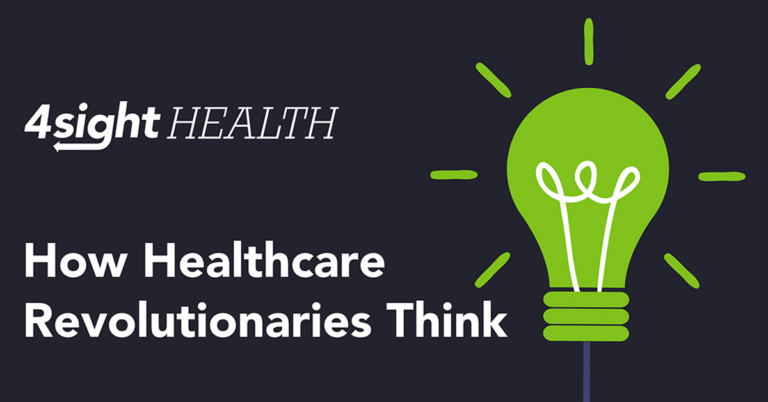July 12, 2022

Burda on Healthcare: What I Did on My Digital Health Vacation
I haven’t followed digital health as closely as I’d like over the past few months. I’ve been distracted by a few small things like abortion rights, gun violence and a multi-layered plot by a fascist political party to overthrow the government. Only in America, as my dad used to say.
That said, I did have time over the past week to catch up on a few digital health reports that I thought I’d share with you. In no particular order, here are ones that made my summer digital health reading list.
Self-Scheduling Yes, Chatbots No
In June, the Center for Connected Medicine and KLAS Research published a report on providers’ use of patient self-scheduling technologies as a pro-consumer patient-engagement tool. CCM and KLAS defined self-scheduling as any tech that lets patients “schedule health care appointments at any time through an online portal, a website, or text messaging (system) without staff interaction.”
The report is based on a survey of a small but mighty group of 51 health IT executives, including CIOs and CMIOs, working at 47 different provider organizations, primarily hospitals and health systems. You can download the 14-page report here. Here are some of the more interesting findings:
- Self-scheduling solutions topped the list of patient engagement tools that respondents said their organizations intend to invest in within the next year, cited by 88 percent of the IT execs. Patient portals came in second at 79 percent.
- At the bottom were symptom checkers and chatbots. Only 40 percent of the IT execs said their organizations were planning to invest in them over the next year. Providers are learning that no one, especially when they’re sick, likes talking to a machine.
- The biggest challenge in implementing self-scheduling tools was buy-in from physicians and administrative staff, cited by 38 percent of the IT execs. That’s curious because most doctors and staff I encounter act like they really don’t like talking to us dumb patients and seemingly would jump at the chance to automate appointments if only to get us off the phone.
More High Tech Than High Touch?
Also in June, Accenture released its annual Digital Health Technology Vision Report. The 2022 report, which you can download here, is based on a survey of nearly 400 healthcare executives in 10 countries.
The 54-page report spends most of its time talking in high-tech language about four big trends that it says will reshape digital health in the future: WebMe, Programmable World, The Unreal and Computing the Impossible. Throw in the Metaverse, Web3 and a small font size, most C-suite healthcare executives and more than a few healthcare journalists like me will gloss over the report. But I did find a few things that I think I understood. Among them:
- 94 percent of the surveyed executives agreed that leading healthcare organizations will “push the boundaries of the virtual world to make it more real, increasing the need for persistence and seamless navigation between the digital and physical worlds.” Think doctors and nurses wearing those virtual reality goggles.
- 80 percent of the execs said the amount of Internet of Things or edge computing devices used in their organizations “significantly” or “exponentially” increased over the past three years. Think clinicians walking around with all kinds of portable smart devices that talk directly to each other.
- The technology that will have the biggest impact on their organizations in the future will be 5G, cited by 47 percent of the execs as “transformational.” Think real-time remote monitoring and remote clinical interventions.
- Asked about artificial intelligence specifically, 57 percent of the respondents said AI will have a “transformational” impact on their organizations in the future. Think doctors and nurses making diagnostic and treatment decisions with AI as their partner.
The question is whether all this high tech, if it comes to pass, will improve outcomes and lower costs for patients. That should be the litmus test for any new technology. If not, it’s just one more expensive toy.
Who Benefits from Digital Transformation?
Separately, Accenture partnered with HIMSS, The Chartis Group and ZS to produce the 2022 State of Healthcare Report. You can download the 12-page report here. The report, which the group issued in June, is based on a survey of 1,600 patients, 359 clinicians, 273 health system executives and 145 payers executives from five countries: the U.S., the U.K., Germany, Australia and New Zealand.
Talk about your sample size. But I live in the U.S., so I’ll recap a few findings from the respondents who work here.
- 79 percent of the U.S. health system executives said their organizations still are in the planning stages for digital transformation.
- 73 percent of the U.S. health system executives said their organizations still are in the planning stages of personalized care.
- Asked to define digital transformation success, 55 percent of the U.S. clinicians said it must meet the needs of employees of their organizations, presumably including themselves, compared with 56 percent who said it must meet the needs of their patients.
My only takeaway from this report, which is as superficial as the Accenture report is deep, is: The system here has a long way to go to catch up digitally with other industries in the U.S. especially when it comes to making the system more customer focused. We know that. This is just one more report saying it.
What the Digital Health Future Holds
Finally, the National Academy of Medicine, formerly the Institute of Medicine, released a 24-page “discussion paper” in June called The Promise of Digital Health: Then, Now, and the Future. You can download the paper here.
Twenty-five digital health and health IT luminaries co-authored the paper, including Judy Faulkner from Epic, John Halamka, M.D., from Mayo, Peter Lee from Microsoft, Eric Topol, M.D., from Scripps, and Kristen Valdes from b.well Connected Health. (We interviewed Valdes for our How Revolutionary Healthcare Leaders Think series. You can read that here.)
The paper’s purpose, according to the authors, was to “provide a comprehensive review of digital health tools and their promise and to identify critical priorities for cooperation and collaboration among policymakers and industry leaders.” They identified key priorities in two domains — environmental and technical — to achieve “the full potential of digital health.”
The environmental priorities are:
- Focusing on the individual (per lack of personalization mentioned in the HIMSS report above)
- Embedding equity and transparency as first principals (as opposed to afterthoughts)
- Reforming health system payments in support of outcomes and value (ahem)
- Nurturing a learning health system ethos
The technical priorities are:
- Establishing seamless system interoperability (ahem)
- Ensuring cybersecurity
- Expanding algorithm validation and real-world testing
What the paper does best is catalog all the potential use cases for digital health technology and tools, from addressing social determinants of health to fueling precision medicine. If you’re an executive who runs any kind of healthcare organization, and you’re asking, “What are we supposed to do with all these expensive toys?” (see the Accenture report above), this NAM discussion paper is for you. Keep it in a separate email folder (digital storage) or print it out and keep it in your top drawer (analog storage).
OK, that’s the end of my brief digital health vacation. I hope you enjoy my digital health summer reading list. Now, back to abortion rights, gun violence and coup attempts. Yes, dad, this is America. It’s time to change things.
Thanks for reading.





